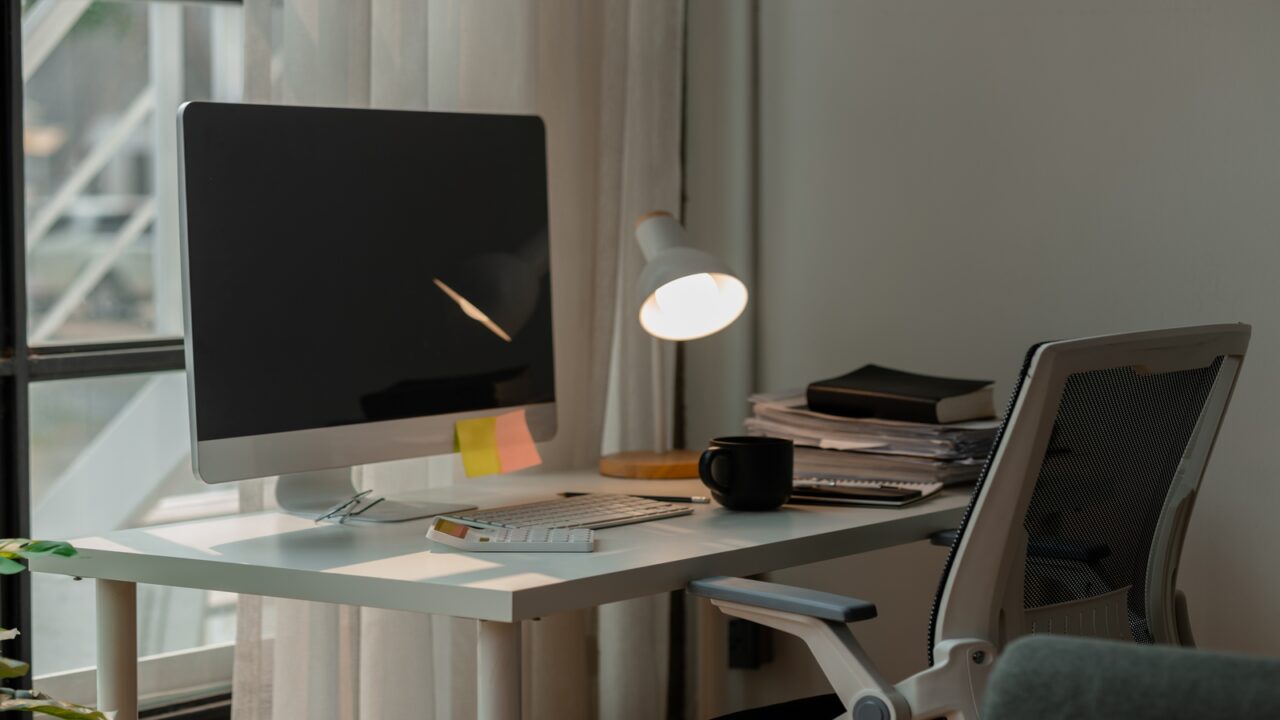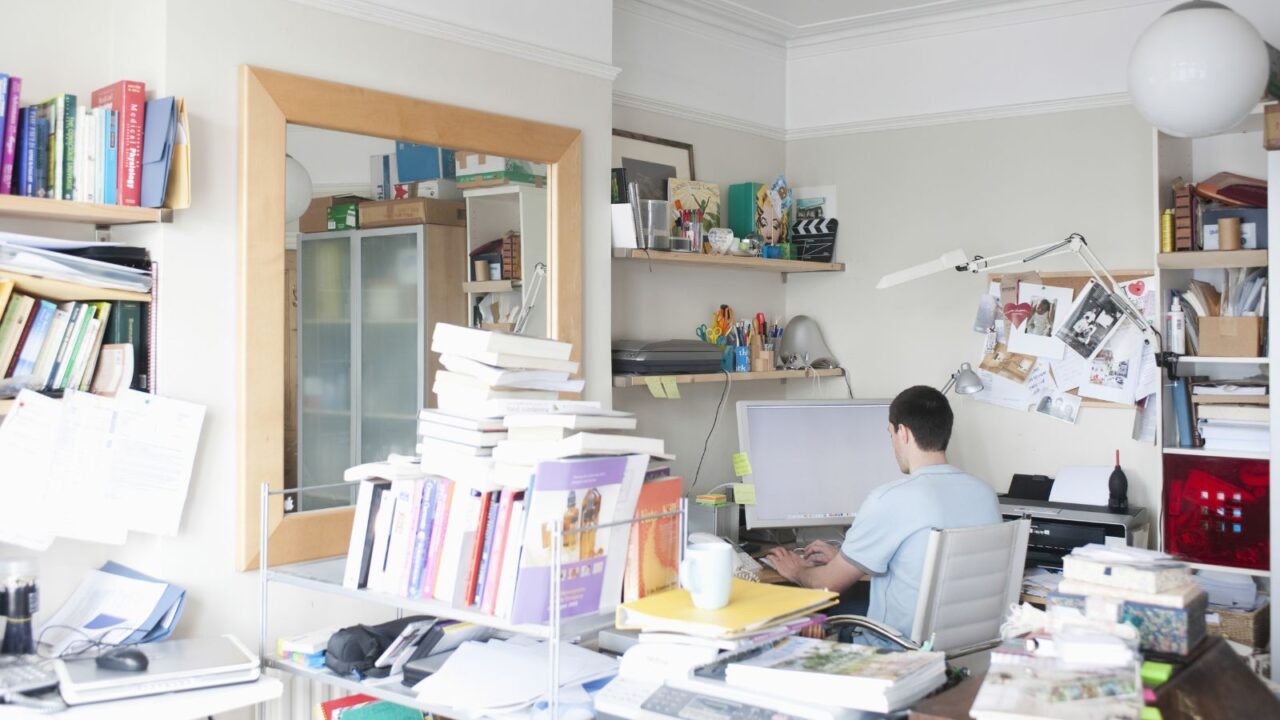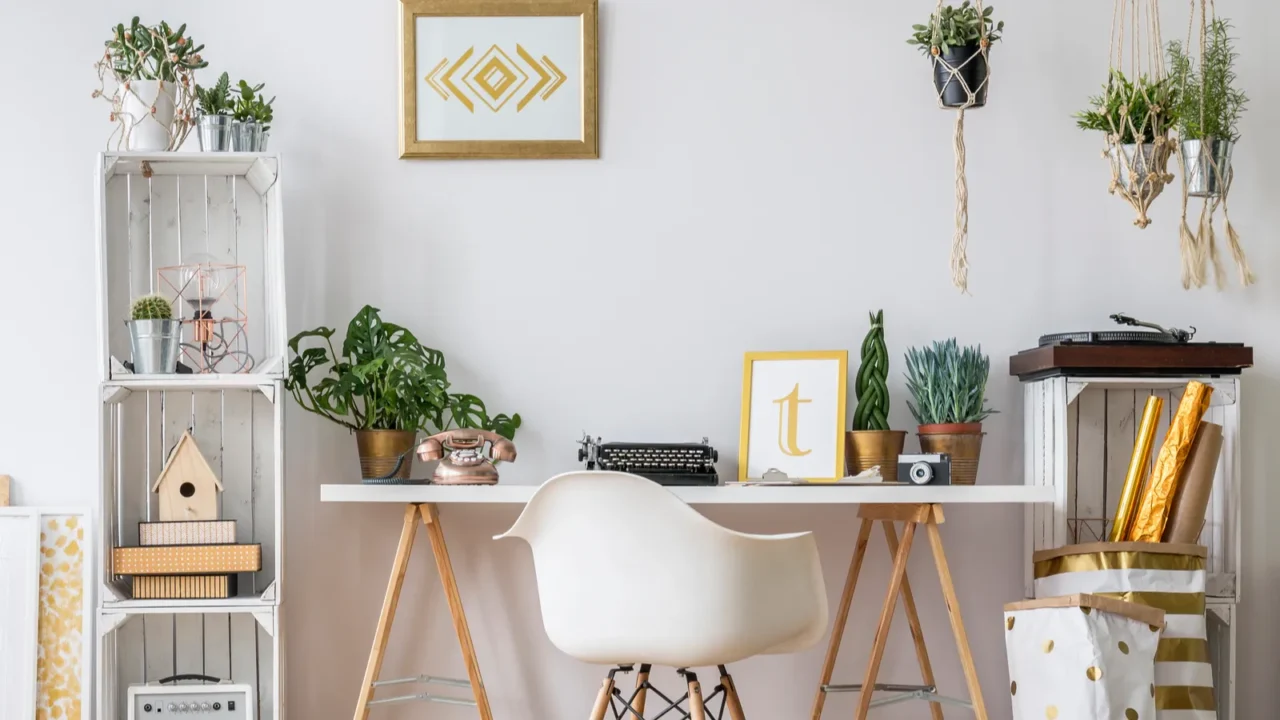
Home Office Design Mistakes to Avoid
Working from home can be productive and enjoyable if your home office is designed well. However, small design mistakes can unknowingly sap productivity and even cause discomfort.
From cluttered desks to poor lighting, these common pitfalls often lead to distractions, mental strain, and fatigue.
Let’s walk through the biggest home office design blunders to avoid and discover practical tips for transforming your workspace into a haven of productivity and focus.

Ignoring Ergonomics
Following ergonomic principles is the key to maximum comfort during long work hours. Ignoring it in your home office can lead to physical strain, aches, and pains, reducing productivity and comfort.
An ergonomic office includes an adjustable chair, a desk at the right height, and a monitor positioned at eye level.
All of these are important to maintain proper posture, avoid injuries, and boost productivity during long hours.

Cluttered Work Surface
We know that clutter can increase stress and reduce focus and a messy desk can clutter your mind, too. Keep essential items within reach, and remove any non-work-related items that don’t belong.
A clean, organized workspace can help you feel more in control, reduce stress, and encourage a focused mindset.
Now, let’s look at another factor that can make or break your workspace—lighting.

Poor Lighting
There is so much emphasis on the importance of having good light in the workspaces, but still, many people overlook it, which ultimately impacts productivity.
Insufficient lighting strains your eyes, leading to fatigue, headaches, and reduced focus. Try to position your desk near natural light, but if that’s not possible, invest in quality, adjustable task lighting.

Distracting Decor Choices
Ideally, your workspace should have minimum decor. Overly busy decor can be more distracting than inspiring.
Bright colors, loud patterns, or too many wall hangings may draw attention away from your work. Opt for decor that feels calm and conducive to focus, such as muted colors, plants, or simple artwork.

Inadequate Storage Solutions
Not having a good storage solution leads to a cluttered area. And a messy and cluttered space keeps you distracted and stressed.
Files, paperwork, and supplies can accumulate over time on the desk casting a visual distraction that will hurt your work productivity.
To avoid this, invest in file organizers, drawer units, or wall-mounted storage to keep essential items accessible but out of sight.

Uncomfortable Temperature Settings
A workspace that’s too hot or too cold can disrupt focus and comfort. Studies show that an ideal office temperature is around 70-73°F, which promotes alertness and comfort.
If your home office is drafty, consider a space heater or insulated curtains, and if it overheats, try a small fan or an air conditioner.

Overlooking Soundproofing
Noise distractions can significantly harm productivity. In a home environment, everything from traffic to family noise can interrupt focus.
Try soundproofing your office with rugs, curtains, or even noise-canceling headphones to block out background sounds. A quiet space encourages concentration and lets you stay in the zone.

Lack of Personalization
A generic workspace can feel uninspiring. Personalizing your office with items like family photos, plants, or inspiring quotes on a whiteboard display can boost mood and motivation.
Just avoid over-personalizing; too many personal items can become a distraction. Choose a few meaningful pieces that make the space feel like yours while keeping the focus on work.

Poorly Positioned Desk
Positioning your desk in a cramped corner or facing a wall can feel isolating and confining. Aim to place your desk where you have a view of a window or open space, which can improve mood and creativity.
This simple adjustment can make your workspace feel larger and more welcoming.

Poor Cable Management
Messy cables create visual clutter and can become frustrating when you need to unplug or move devices. Plus, it causes the danger of tripping as well.
Use cable organizers, clips, or zip ties to keep cords neatly out of sight.
Managing cables improves your desk’s appearance, prevents tripping hazards, and reduces the risk of accidentally disconnecting equipment.

Ignoring Greenery
Having indoor plants in your workspace can help lower stress levels and promote calm.
Go with low-maintenance plants like succulents or snake plants to add a touch of green to your workspace without extra effort. Creates a fresh, calming atmosphere with greenery that promotes better focus and a positive mindset.

Poor Ventilation
Stale air can lead to drowsiness and discomfort. Proper ventilation keeps your mind sharp by ensuring a steady flow of fresh air. If possible, open a window or use an air purifier to maintain air quality.
Fresh air improves alertness and also supports a healthier environment overall. Making sure your office has good airflow can keep you energized throughout your work.

Neglecting Routine Clean-ups
Without regular cleaning, dust, crumbs, and clutter can quickly accumulate, creating an unpleasant workspace. A clean workspace is essential for mental clarity and motivation.
Try to schedule a weekly clean-up to remove dust, organize papers, and wipe down surfaces.
Keeping your home office tidy supports a positive mindset and makes it easier to focus on tasks.

Lack of Updated Technology
Outdated or inadequate technology can be a major productivity killer. Slow computers, unreliable internet, or old software can make simple tasks time-consuming and frustrating.
Investing in updated, efficient technology can streamline work processes, reduce downtime, and make your tasks run more smoothly.
Consider upgrading your internet speed, or adding a secondary monitor to improve multitasking. With all the latest technology, Create a Tech-Savvy Work Station at Home, to make your work streamlined and stress-free.

Not Separating Work and Home Spaces
When your workspace overlaps with your personal space, it’s easy to blur the lines between work and relaxation.
Designate a specific area for work—even if it’s a small nook—to mentally separate work time from leisure time.
By having a distinct work zone, you can focus better during work hours and relax more fully outside of them.
Want to know how to design a space that boosts productivity and reduces stress? Learn how to create a Productive and Stylish Workspace.